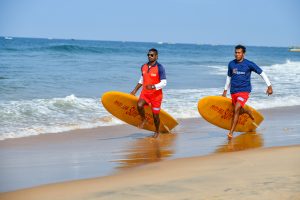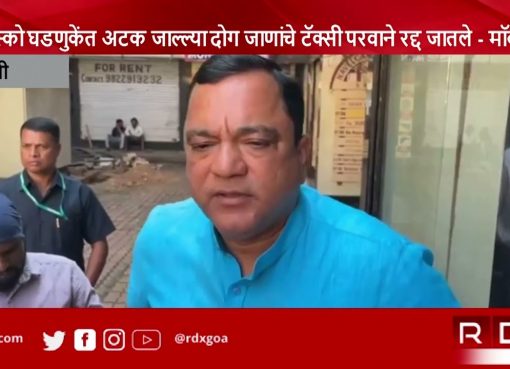

Panaji April 2023: An extreme summer is on the cards for India as 36 weather stations in cities across the country recorded temperatures above 42 degrees Celsius on Monday. The Indian meteorological department (IMD) has predicted heatwaves in Eastern India and Northwest parts of India in the coming two days. As a result, more people are flocking to the beaches to cool off in the rising heat.
Domestic tourists have been heading to Goa with families in tow for their annual summer break.
Temperatures in the state are set to soar this month with the summers reaching its peak. According to the India Metrological Department (IMD), since March 1, till date, the maximum temperature has been above 36 Degree Celsius for the continuous period. The maximum temperature over Goa is likely to remain 4-6 Degree Celsius above the normal value.
With tourists and locals heading to the beach to get some respite from the heat and cool off amidst the waves, Drishti Marine, the state-appointed professional lifeguard agency has issued a summer advisory on simple ways to stay safe while at the beach during the hot summer month.
Drishti’s 450 -strong lifesaving force man Goa’s beaches throughout the year. Owing to the present sea conditions, it is advisable to swim between the flags marked in red and yellow as they indicate moderate surf and currents while strictly avoiding the red flag areas which indicate the non-swim zones. A beach umbrella is ideal to protect yourself from the sun’s direct heat, keep yourself hydrated by drinking plenty of water. It is advisable to carry sunscreen in order to protect yourselves from sunburns and heat-strokes. The blue sea is inviting during the sweltering summers. However, the seemingly calm waves may have rip currents, flash currents and underwater currents that the beach goers need to be cautious about before taking a dip into the sea. The team of lifesavers present along the coast monitor the surroundings and are trained to carry out rescues in the rough sea conditions.
Navin Awasthi, Operations Head at Drishti Marine says, “The scorching heat also can be the cause of skin rashes, sunburns, and heat strokes. Make sure to stay hydrated through the day and try to avoid being in direct sunlight between 12noon and 3.00pm when the rays are the harshest.”
“There are 35 lifesaver towers spread across Goa. In case of any injury, it is best for the beach goers to approach a lifesaver as each lifesaver tower is equipped with a first aid kit.” also adds Navin
Each morning, lifesavers map the sea currents, changes in wind patterns and underwater activity in order to identify safe swim zones along every beach and mark them with the red and yellow flags. Unsafe zones which are at risk of rip and underwater currents are marked out by red flags, indicating that it is unsafe to swim.
Dos and Don’ts for the Summer
- Always swim in the safe swim zones as marked out by the lifesavers. While on the beach find the red and yellow flags and always swim between them. Do not venture into the no-swim zones marked with red flags.
- Whenever possible always swim under the sight of the lifesaver towers and lifesavers. There are 22 beaches across South Goa and 17 beaches across the North Goa stretch that are under the watchful eye of the lifesavers. Additionally, lifesavers are posted at Mayem lake and Dudhsagar
- It is best to visit the beach when the lifesavers are on duty between 7:30 a.m. and 6:00p.m.
- It is advisable to carry caps, umbrellas, sunscreen and a water bottle to save yourselves from dehydration, sunburns and heat-strokes.
- Keep yourself hydrated by drinking plenty of water.
- If a child goes missing, do not panic. Alert a lifesaver immediately
- If you have an encounter with a rip current while swimming. It is best to stay afloat and alert the lifesaver on duty. The lifesavers are constantly monitoring the beach and are trained to identify incidents.
- Never swim alone. If you get into trouble, stick your hand in the air and shout for help.
- Always read and obey the safety signs usually found at the main entrance of the beach.
- Do not attempt to rescue if you see anyone in difficulty if you are not a trained lifesaver. If on a beach with lifesavers, contact the nearest lifesaver or approach the lifesaving tower.





